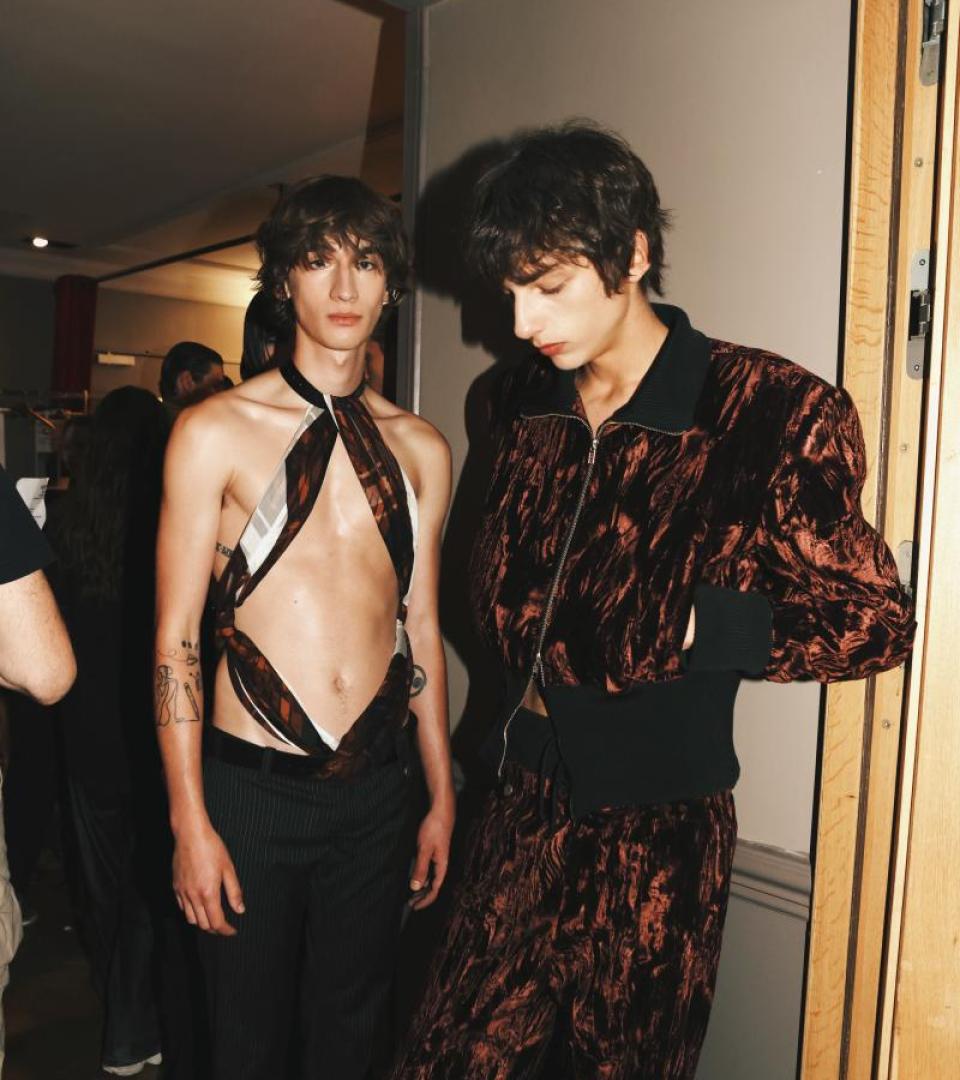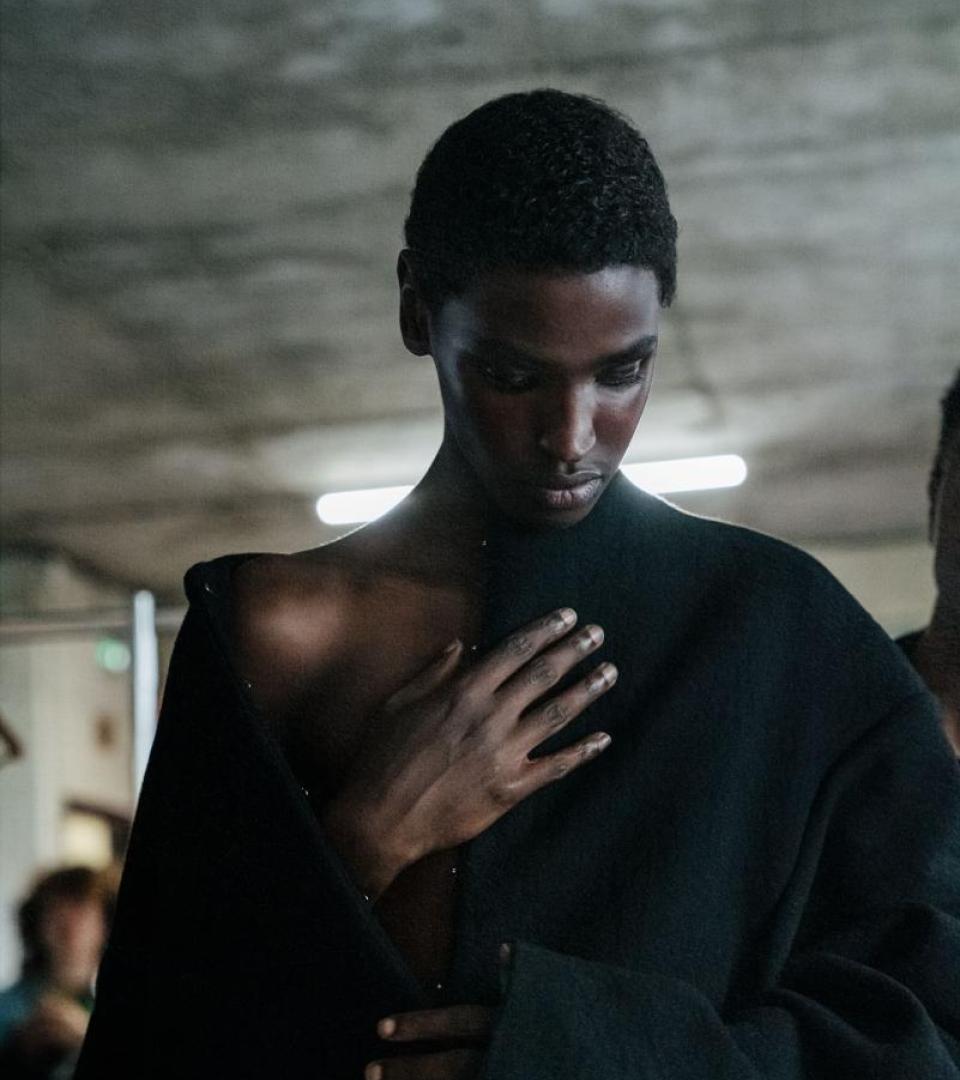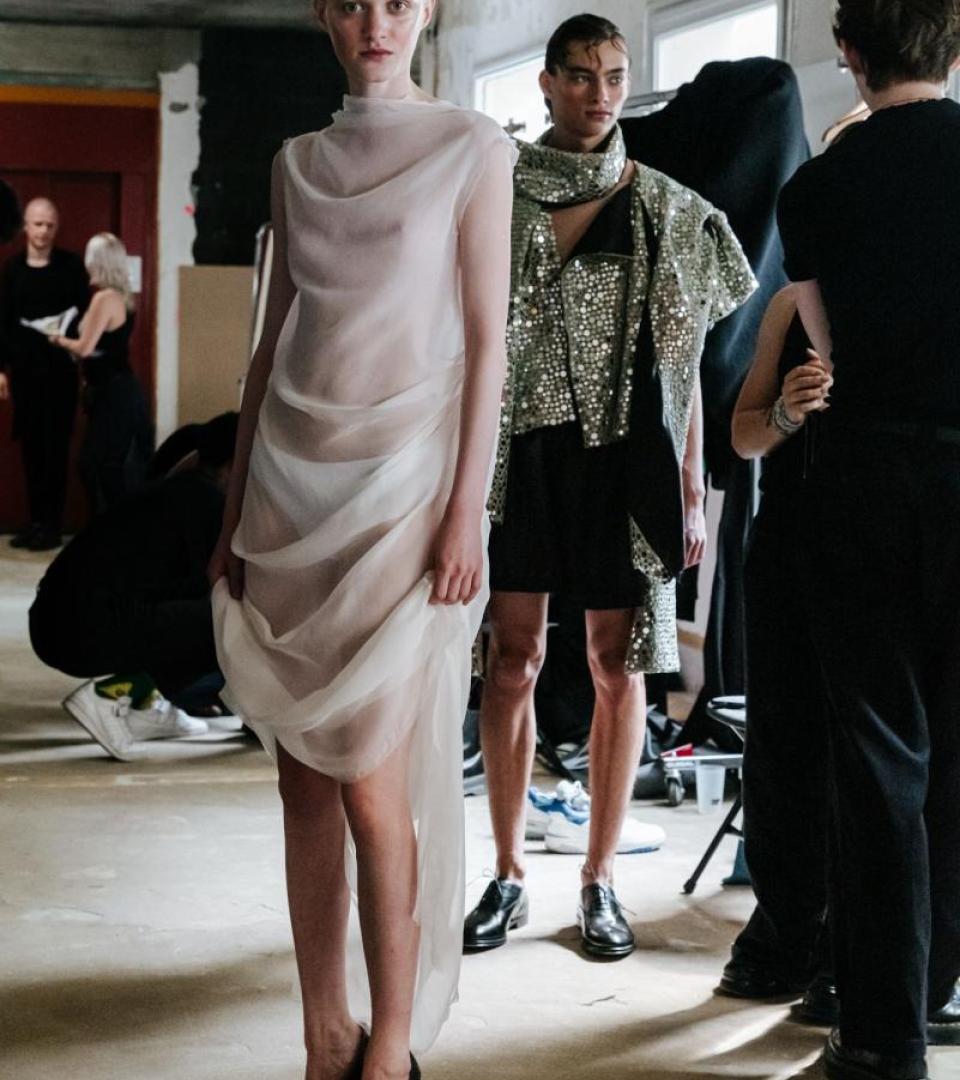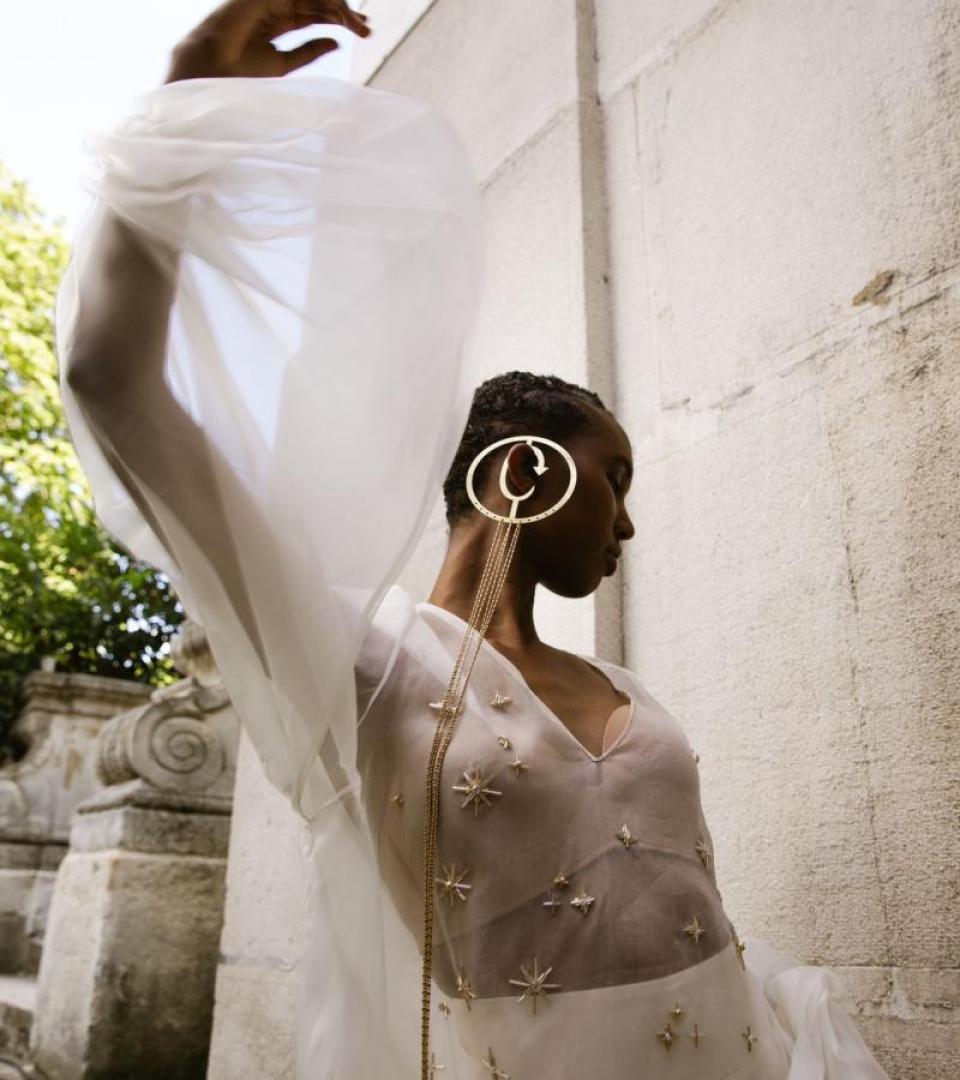Coming of Age at Weinsanto
By Paul McLauchlan
Five years since his debut, Victor Weinsanto continues to christen the opening day of Paris Fashion Week with some dramatic exuberance and spunky cabaret. For Spring-Summer 2026, the designer enlisted his friends, adult entertainer Allanah Starr and visual artist Angèle Micaux, to transform his catwalk into a scene borrowed from a 19th century French court. Weinsanto evoked the spirit of 18th and 19th century paramours of French kings: de Pompadour, du Barry, de Montespan and de La Vallière. Entitled Les Irrésistibles Favorites, the fifth anniversary collection encapsulates the witty and wonderful Weinsanto spirit.
There are signs Weinsanto is maturing. On a personal level, he married his husband Jan Robert-Allo this summer. His burgeoning business survived a global pandemic and a wider luxury downturn that has been unkind to emerging brands. Regarding design, Weinsanto has elevated his fabric offering to jacquard de soie and silk taffeta while riffing on epochal hallmarks like frills, lavallière collars, crinolines and bustiers. In true Weinsanto fashion, hemlines are slashed to ultra-minis; crinolines are exposed by transparent fabrics like organza; bustier skirts blossom like rose petals. Meanwhile, fanny packs and whimsical hats referencing 18th-century fontanges and tricorns are confident forays into the accessories category. He leaned into a haute sensibility with a dress, made entirely wood, designed in collaboration with woodworker Amaury Darras and artist Damien Moulierac. Entitled ‘Diamonds & Lace,’ Weinsanto introduces high jewellery, collaborating with the workshops of Van Der Baude in Geneva. But, at its core, there remains the winking wryness that is quintessentially Weinsanto.
“It’s something playful and dramatic. I want to bring back the energy that I love seeing on stage,” said the designer on a video call from his Paris studio.



